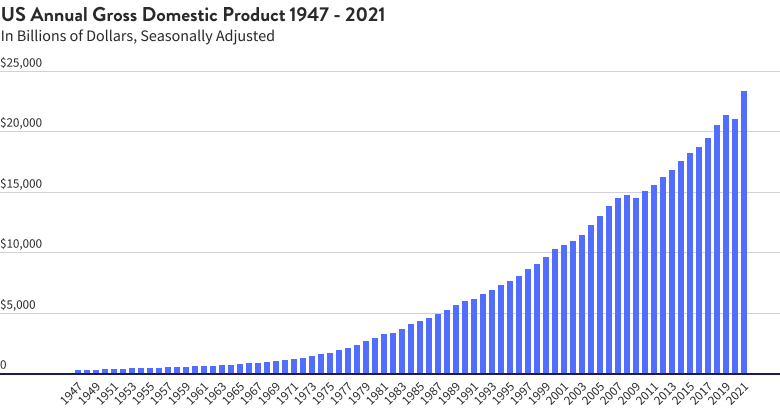The gross domestic product (GDP) is the total market value of all finished goods and services produced in the country within a defined period. “Finished goods” are products not yet distributed to consumers, one cog in the supply chain. How GDP shrinks or grows over time is a good indication of an economy's health.
A strong and growing GDP typically means an upward trend for the economy that bolsters confidence among entrepreneurs, businesses, and workers.




































































































